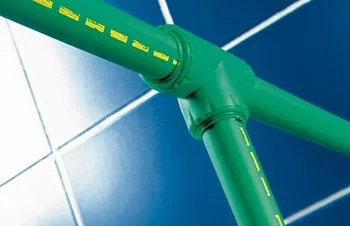Dec . 12, 2024 09:50 Back to list
ppr pipe vs pvc pipe products
PPR Pipe vs. PVC Pipe A Comprehensive Comparison
When it comes to plumbing and piping systems, selecting the right material is crucial for ensuring durability, efficiency, and reliability. Two commonly used materials in this domain are Polypropylene Random Copolymer (PPR) and Polyvinyl Chloride (PVC). Each of these materials has its own set of characteristics, advantages, and applications. This article explores the essential differences and similarities between PPR and PVC pipes to help you make an informed decision for your next project.
Composition and Production
PPR pipes are made from polypropylene, a thermoplastic polymer known for its excellent chemical resistance and durability. The random in random copolymer refers to the molecular structure of the material, which allows for better flexibility and flow characteristics. Conversely, PVC pipes are manufactured using polyvinyl chloride, a synthetic plastic polymer. PVC is known for its rigidity and strength, making it suitable for a wide range of applications, from plumbing and drainage systems to electrical conduits.
Temperature and Pressure Resistance
One notable difference between PPR and PVC pipes is their thermal and pressure resistance. PPR pipes have a higher tolerance for temperature and can withstand heat up to 95 degrees Celsius (203 degrees Fahrenheit). This makes them a popular choice for hot water supply systems and heating applications. PVC pipes, on the other hand, are generally limited to a maximum temperature of around 60 degrees Celsius (140 degrees Fahrenheit). While PVC can handle lower pressure applications well, it is not recommended for high-temperature uses.
Durability and Longevity
In terms of durability, PPR pipes outperform PVC pipes in various aspects. PPR has a longer lifespan, often lasting 50 years or more with proper maintenance. Its resistance to corrosion, scaling, and deposits ensures a consistent flow rate over time. PVC, while durable, can be more susceptible to impact damage and may become brittle over time, especially when exposed to UV light or extreme temperature variations. Thus, while both materials can last a long time, PPR is generally favored for longevity and reliability.
ppr pipe vs pvc pipe products

Installation and Flexibility
Installation is another critical factor when comparing PPR and PVC pipes. PPR pipes are typically joined using a fusion welding process, which creates a strong, leak-proof bond. This method allows PPR to be installed with fewer joints, reducing potential leak points. On the other hand, PVC pipes are connected using solvent cement, which can be less reliable over time. Furthermore, PVC lacks the inherent flexibility of PPR, which can make installation in tight spaces more challenging.
Cost Considerations
When it comes to cost, PVC pipes usually offer a more budget-friendly option. They tend to be less expensive upfront, making them an attractive choice for cost-conscious projects. However, while PPR pipes may have a higher initial cost, their long-term benefits and reduced maintenance can offset this difference. When assessing costs, it is essential to consider the longevity and performance of the materials over time.
Applications
Both PPR and PVC pipes have a wide range of applications. PVC pipes are often used in drainage systems, underground utilities, and irrigation due to their strength and affordability. PPR pipes are primarily used for residential and commercial hot and cold water supply systems, as well as in heating applications due to their high-temperature resistance.
Conclusion
In the debate between PPR and PVC pipes, the right choice ultimately depends on your specific needs and application. PPR pipes excel in high-temperature and pressure applications, while PVC pipes are budget-friendly and suitable for various general-purpose uses. Understanding the advantages and limitations of each material can guide you in making an informed decision, ensuring that your plumbing or piping system meets your performance and longevity expectations. Whether you prioritize cost, durability, or temperature resistance, both PPR and PVC have their place in modern plumbing systems.
-
High-Quality PVC Borehole Pipes Durable & Versatile Pipe Solutions
NewsJul.08,2025
-
High-Quality PVC Perforated Pipes for Efficient Drainage Leading Manufacturers & Factories
NewsJul.08,2025
-
High-Quality PVC Borehole Pipes Durable Pipe Solutions by Leading Manufacturer
NewsJul.08,2025
-
High-Quality PVC Borehole Pipes Reliable PVC Pipe Manufacturer Solutions
NewsJul.07,2025
-
High-Quality UPVC Drain Pipes Durable HDPE & Drain Pipe Solutions
NewsJul.07,2025
-
High-Quality Conduit Pipes & HDPE Conduit Fittings Manufacturer Reliable Factory Supply
NewsJul.06,2025

